Koolasuchus cleelandi — a 4 metre-long amphibian — lived alongside dinosaurs about 125 million years ago. Supplied: Museums Victoria.
Sian Johnson, Should a ‘mysterious marsupial’ or a giant, round-headed amphibian be Victoria’s state fossil?, ABC News, 18 August 2021
Alright Victorians, while we are all either stuck in lockdown or limited by restrictions, the time is ripe for us to get together (virtually), peer back millions of years, and answer an important question.
Which fossil should we choose to represent our state?
New South Wales, South Australia, and Western Australia already have fossil emblems, but Victoria does not. It’s time.
Museums Victoria has opened up voting for a shortlist of eight fossils selected by paleontologists, geologists and other scientists, all of which were found in Victoria and are housed in the museum’s collection.
The winning specimen will join our other lauded state emblems like the Leadbeater’s possum (our state animal), weedy seadragon (our state marine animal), and gold (our state mineral).
You’ve got until October 4 to read up on some of the weird, wonderful, and sometimes mysterious animals and plants that used to roam, or grow, in this part of the world.
Learn more about the (sometimes tiny) fossil remnants they left behind that reveal their stories, then cast your vote.
Koolasuchus cleelandi, 125 million years old
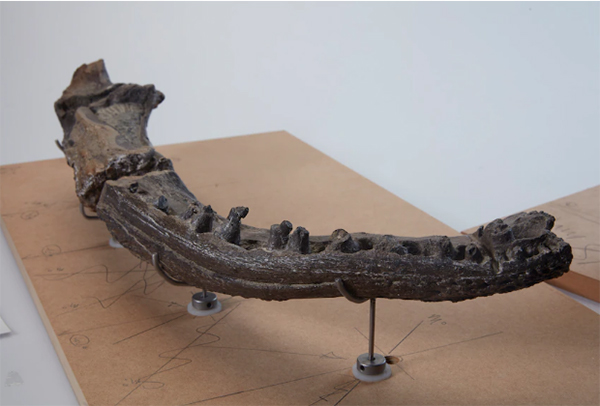
The fossils of this “relic” amphibian species that bears some similarities to crocodiles have been found at San Remo in South Gippsland, on Boonwurrung country.
Museums Victoria’s vertebrate paleontology collections manager Tim Ziegler said Koolasuchus cleelandi lived alongside dinosaurs.
“To picture koolasuchus, you need to start with something like a salamander, make it scaly, like a fish,” he said.
“Make it about three or four metres long, like a car, give it tusks two inches long coming out of the roof of its mouth and sit it in the bottom of a river waiting for whatever swum along to come by as food.”
Mr Ziegler said it may seem ancient, but in fact, the relative youth of koolasuchus to its ancestors is what sets it apart.
“Even when it was alive 125 million years ago, koolasuchus was already a relic,” he said.
“Its closest ancestors went extinct more than 50 million years before that.”
Palorchestes azael, 40,000-2 million years old
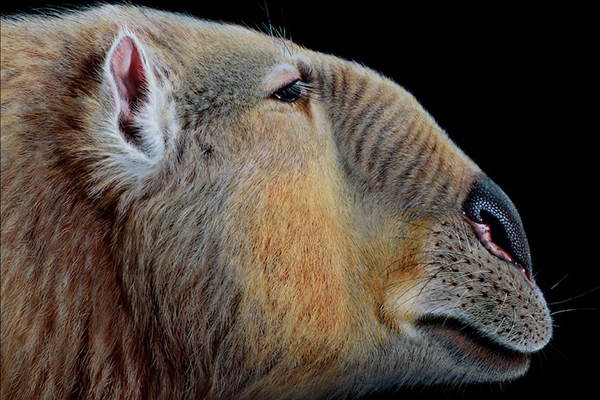
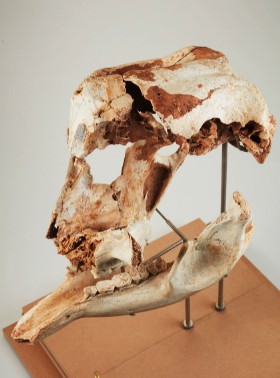
The palorchestes azael, an ice-age mammal, was around relatively recently compared with the other candidates.
Museums Victoria’s vertebrate paleontology research assistant Hazel Richards said the strange-looking animal probably weighed about 1,000 kilograms.
“This was a gigantic, mysterious marsupial with a long, skinny face, tiny eyes, muscular arms and huge claws,” she said.
“It’s amazing to envisage these animals lumbering around the forests of places like the Otways.
“Whenever I go there, I look extra hard because you have this feeling that maybe you just missed one.”
She said palorchestes azael fossils were incredibly rare, but the best-preserved and most useful clues about the species had been uncovered in Victoria.
Some of the most complete fossils found by researchers come from the Buchan Caves in Gippsland on Krauatungalung country.
Palorchestes azael lived from around 2 million years ago right up to about 40,000 years ago.
Pelagornis, 5 million years old
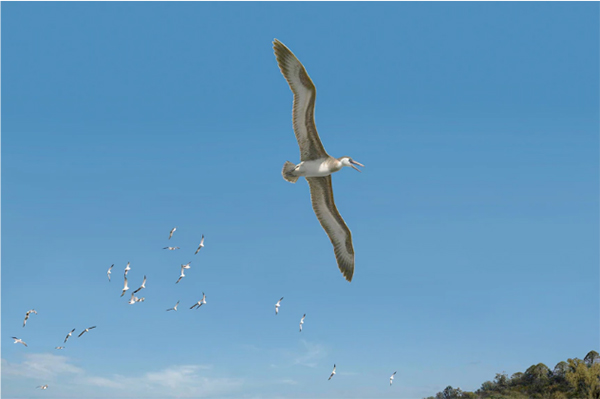
A fossilised bone from a huge sea bird that used to roam with dinosaurs was found by eagle-eyed members of the public in the Melbourne bayside suburb of Beaumaris on Boonwurrung country nearly a decade ago.
Museums Victoria biodiversity researcher Karen Rowe said evidence of the pelagornis had been found all around the world except Australia until the fossil was spotted.
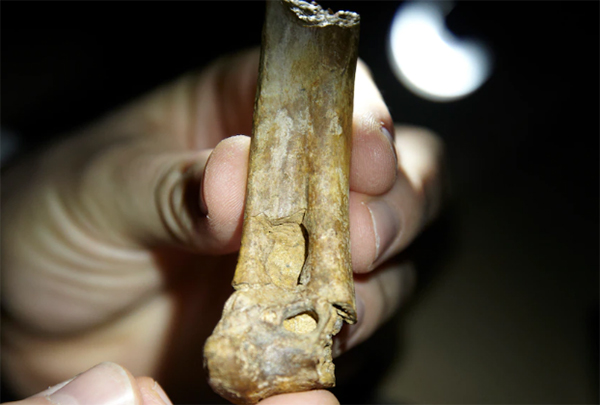
“This fossil represents that missing link to the rest of the world,” Dr Rowe said.
“It’s an amazing bird that has a wingspan of more than 6 metres, that looks like a cross between a pelican and an albatross.
“We have all that information just from this one tiny little bone.”
Baragwanathia, 425 million years old
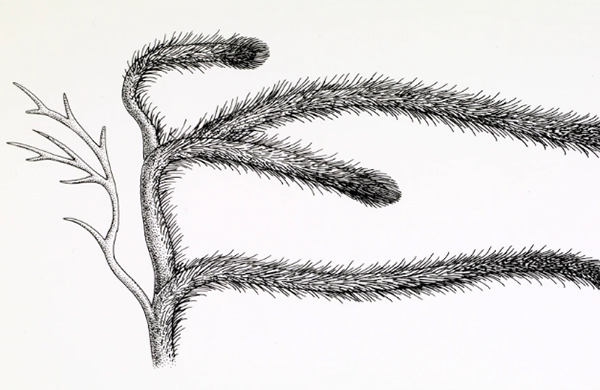
When the first baragwanathia fossil was found, it was identified as one of the oldest land plants in the world.
Significant sites where baragwanathia fossils have been identified include the town of Yea, on Taungurung country.
Museums Victoria vertebrate paleontology senior curator David Holloway said one of Australia’s first female scientists, Isabel Cookson, named the sprawling, feathered plant that grew to 2 metres in marshy areas.

“This specimen is from the Yea district, and the rocks there have been dated at around 425 million years old,” Dr Holloway said.
“At that time, plants were moving from the seas and lakes onto land after developing structures that allowed them to grow upright without the support of water.”
Janjucetus hunderi, 25 million years old
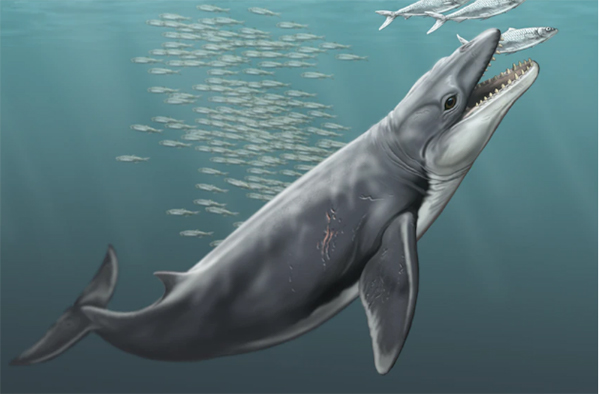
Fossils from janjucetus hunderi, an ancient whale unique to Victoria’s coastline, were found on a beach near Torquay on Wathurong country by a local teenager.
Museums Victoria’s vertebrate paleontology senior curator Erich Fitzgerald described it as a “pocket whale” compared with its giant modern descendants, growing to just 3 metres long.
“It was an early ancestor of today’s blue, humpback and right whales, but it was tiny,” he said.
Dr Fitzgerald said the fierce whale had “really gnarly, serrated, sharp teeth”.
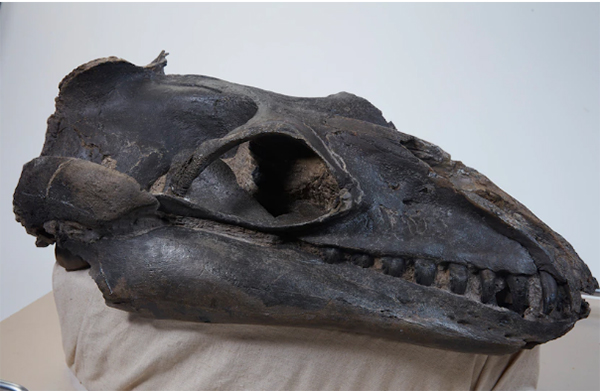
He said the teenage boy who noticed the fossil did the right thing and contacted the museum.
“[He] was surfing down at Jan Juc, came in out of the surf and noticed something shiny in a rock and realised it was part of a fossil skull,” he said.
“It’s an amazing example of citizen science and the fact that everyone out there can make huge discoveries that change the history of the planet.”
Visit Museums Victoria to see the full list and to cast your vote.

